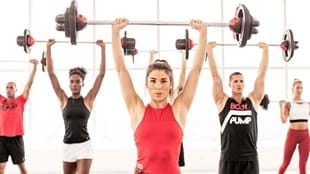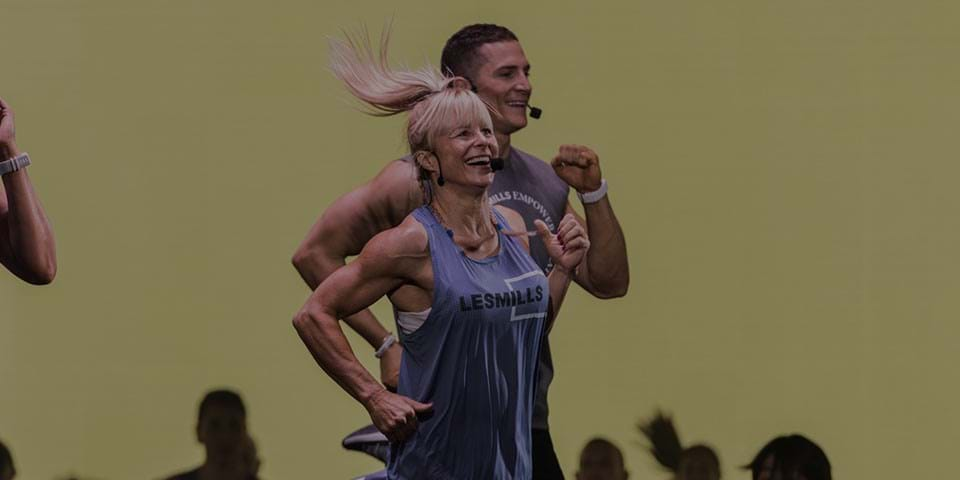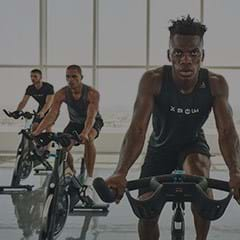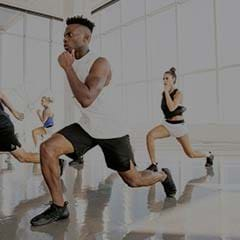Research tells us that we burn more calories when we lift lighter weights at a faster speed, but that doesn’t mean lighter is always better. Improving strength and athletic performance comes from constant progression, so raising the bar and regularly upping your weights is a must. Adding load during your back training is a great place to start.
In a BODYPUMP workout there’s a whole track dedicated to back training, and it’s typically jam-packed with clean and presses – a key exercise that engages almost every muscle of the body while seriously strengthening the posterior chain. Done in quick succession, clean and presses also fuel cardio intensity which takes your power and athleticism up a notch and sends calorie burn sky high.
Many people play it safe and clean and press with a relatively light weight. The problem with this is that the upper body, particularly the arms, can “muscle” the weight through the motion of the clean and press. Typically, it ends up looking like a reverse grip bicep curl. In this situation you only engage the arms and shoulders, which will not give you the cardiovascular or strength benefits of the clean and press.
To get the most from this move you need to select the right weight – and there’s one sure-fire way to do it.
Once you have a weight on the bar, try to do a forward raise with the bar. This involves lifting the bar from your thighs to shoulder height while keeping the elbows straight.
If you’re able to do a forward raise, there is not enough weight on the bar. Continue to add weight until you find a weight where you can’t do a forward raise.
If you have enough weight on the bar you won’t be able to “muscle” it up with your upper body, which means you’ll need to recruit the bigger leg muscles to drive the bar up so you can catch it high on the chest. The upward motion of the bar is initiated when you bend your knees to preload the legs and quickly drive the hips forward. It may also be easier to lift the heels off the floor to generate more momentum. The bar will start to move vertically, close to the body. Once the bar hits its apex, you can jump underneath it to catch it in a mini-squat.
When done correctly, the clean uses very little upper body activation. Your elbows simply lift above the bar and the arms merely guide the bar up. The upper body joins the party when you add the press. Using the momentum of the legs as you stand up out of the mini-squat, the arms press the bar up and slightly in front of the head. The bar hits the top for the moment and then you allow it to drop back down to catch it again high on the chest while you drop into the mini-squat.
After you’ve established your correct minimum weight, the aim is to use that weight for all your clean and presses. You may find you need to work on your conditioning to be able to maintain that weight. The great thing about BODYPUMP is you can put the bar down and take a break if you need it. Or you can reduce the weight and slowly add more weight every workout.
When you have your weight – and your technique – bang on, your clean and presses will become so much more effective. Your heart rate will jump up, you’ll start to breathe heavy, and you'll start to feel the changes in your body.
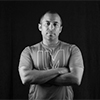
Alex Hernandez is a North Carolina-based BODYPUMP and LES MILLS GRIT trainer who also teaches BODYCOMBAT, BODYJAM, and BODYFLOW. He is a proponent of purposeful training to improve movement and performance, embraces the idea of the unsteady state, and as a master trainer for Trigger Point Performance, he regularly shares his expertise in self-myofascial recovery. He is also a mechanical engineer.
If you want more health and fitness inspiration simply sign up to Fit Planet and get the freshest insights and advice straight to your inbox.



